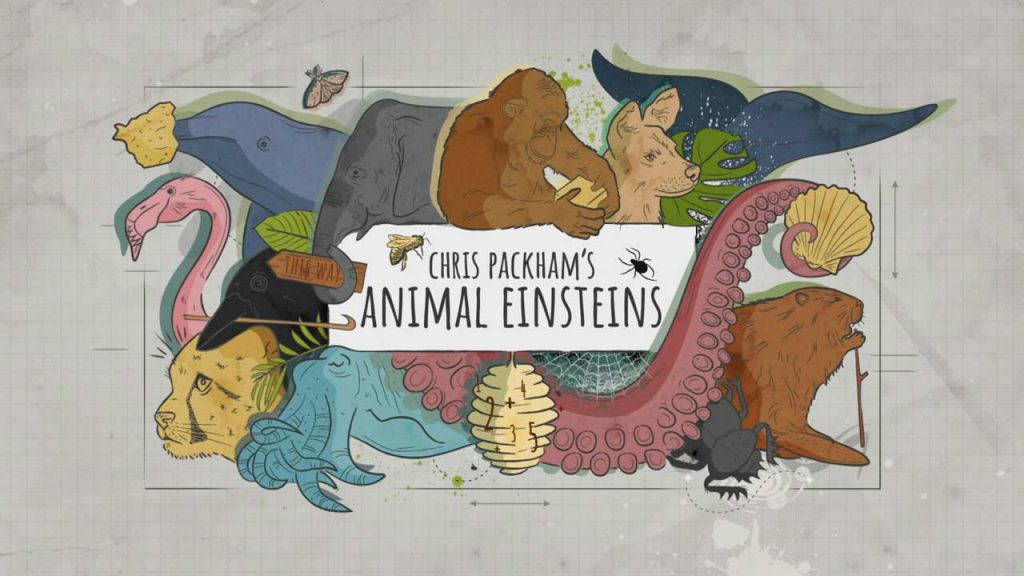Chris Packham’s Animal Einsteins episode 1: In this episode, Chris Packham investigates how nature’s masterminds measure up against human brain power. Looking at a variety of animals, such as ravens, crows, bees and starlings, Chris explores how different animals can use tools, solve complex puzzles, recognise themselves in mirrors and even reason like humans.
Animals have to be smart to survive. Chris Packham reveals the natural world’s surprising brainboxes and uncovers the clever strategies that give certain species the upper hand. If you want to see bees playing football or cuttlefish dreaming, look no further. Chris Packham’s new series offers plenty of striking evidence that “nature’s savviest species” have faculties you wouldn’t expect unless you’ve seen programmes like this before. Take the New Caledonian crow, which shows impressive skill as a maker of tools that it uses to winkle out grubs from tricky spots.
We watch as a five-year-old boy tries to fish a sweet out of a tube with a piece of metal, never thinking to bend the end into a hook – a trick the crows have sussed out, apparently. We also meet a remarkable raven that’s able to solve a seven-stage puzzle box to get at food. It’s slightly unnerving watching the way he attacks the puzzle, as if he’s impatient with the nonsense that humans put him through.
Chris Packham’s Animal Einsteins episode 1
It’s difficult to compare the brain power of animals and humans directly, as their brains have evolved to solve different kinds of problems and perform different functions. However, there are certain aspects of animal cognition that are often compared to human intelligence. For example, some species of primates, dolphins, and some birds have shown advanced problem-solving abilities, communication skills, and social cognition. These abilities are often seen as evidence of a high level of intelligence in these animals.
However, when it comes to complex abstract reasoning and language, humans are considered to be unparalleled. Humans have the ability to think abstractly, create and manipulate complex systems of symbols and language, and engage in sophisticated planning and decision-making. That being said, it’s important to remember that intelligence is a complex and multifaceted trait, and there is still much that scientists don’t understand about animal cognition. Some animals may have unique cognitive abilities that we have yet to discover or fully understand.
Different animals have been observed using tools, solving complex puzzles, and recognizing themselves in mirrors. Here are some examples:
- Tool use:
- Chimpanzees: They use twigs to extract termites from their nests and use rocks to crack open nuts.
- Crows: They use sticks to extract insects from tree bark and use cars to crack open nuts by dropping them on the road and waiting for a car to run over them.
- Sea otters: They use rocks to break open the hard shells of their prey, such as clams and mussels.
- Solving complex puzzles:
- Elephants: They have been observed solving complex puzzles that require them to manipulate objects with their trunks to obtain food rewards.
- Octopuses: They are known for their ability to escape from tanks by unscrewing lids, opening jars, and navigating mazes.
- Ravens: They can solve complex puzzles that require them to use tools in a specific order to obtain food rewards.
- Recognizing themselves in mirrors:
- Chimpanzees: They have been shown to recognize themselves in mirrors by using the mirror to inspect parts of their bodies that they cannot see directly.
- Dolphins: They can recognize themselves in mirrors and use them to inspect parts




